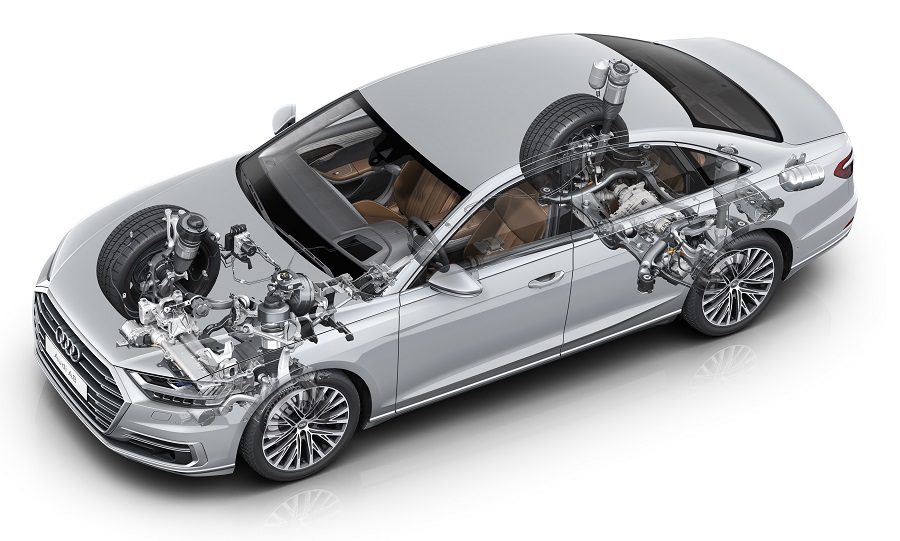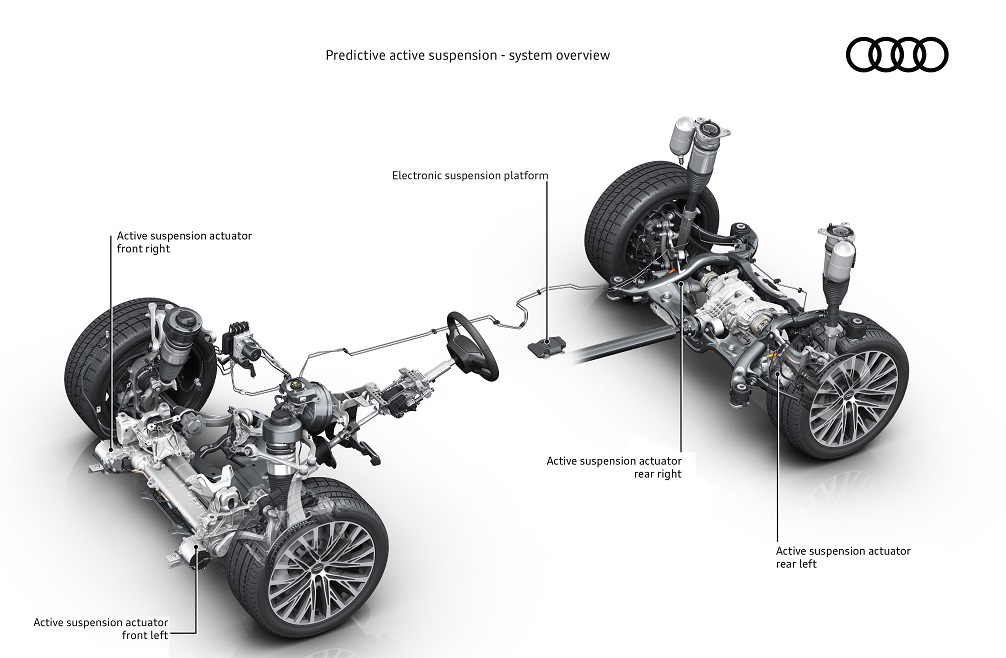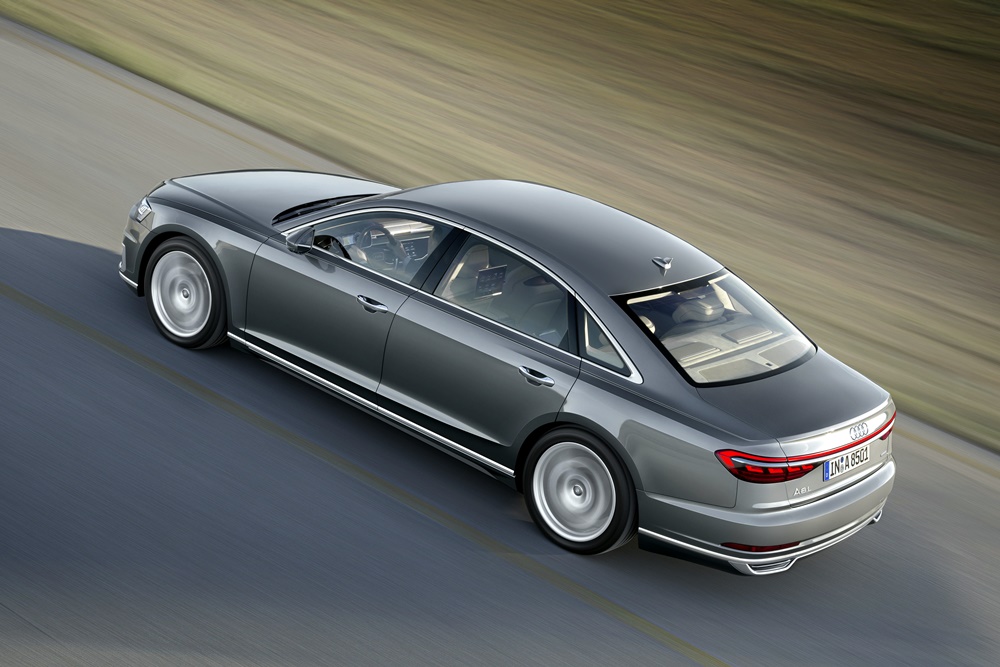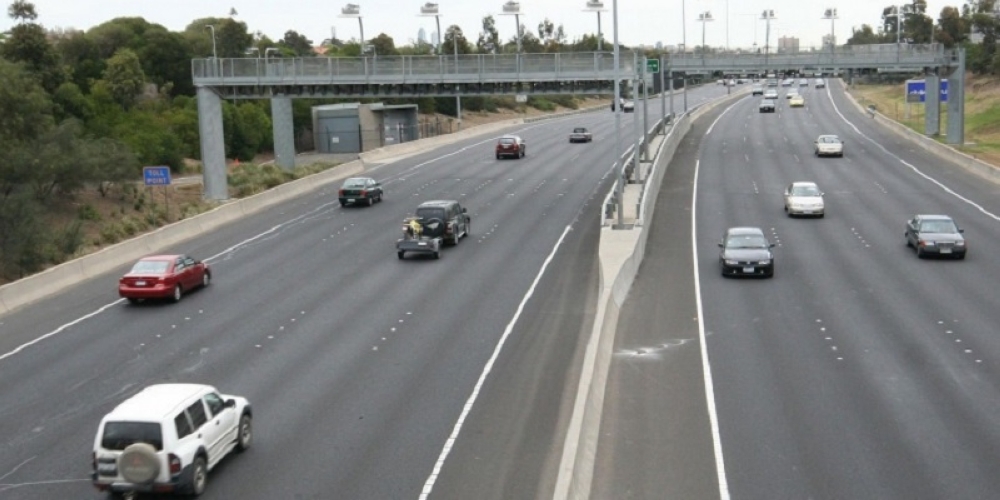Active suspension, as opposed to passive suspension, differs in that the latter – found in the majority of vehicles – is not constantly adjusted to optimise performance on varying surfaces. Passive suspension can be tuned but the settings remain fixed so the engineers often have to find a compromise between handling and comfort.
Active suspension does tuning in real time, with adjustments made as surface conditions change. One could say the hydro-pneumatic concept in Citroen suspension systems from the 1950s onwards was the earliest form of active suspension. Sensors kept track of the road conditions and compression rates of the suspension were varied for comfort and it was also possible to raise and lower the ride height for enhanced stability at higher speeds.
With the electronic age and use of solenoids providing quick actuation, active suspension advanced more quickly in performance. Toyota’s Electronic Modulated Suspension (TEMS) in the Soarer of 1983 is considered the first production example of active suspension using electronics. In the years to follow, more powerful computer processors would alter damping rates in milliseconds as the car moved along at high speed.
Audi’s innovation advances active suspension
Now Audi is offering predictive active suspension for its latest A8 sedan. Depending on the chosen settings, it gives the brand’s flagship model the supreme ride comfort of a chauffeur-driven limousine or the firm handling of a sportscar – no need for compromises. In Germany, this option is priced at 5,450 euros (equivalent to about RM25,000).
A fully active suspension system, it uses electromechanical actuators to adjust the suspension. They can lift up or force down each of the luxury sedan’s wheels individually, to actively manage the body’s ride height in every situation. The active suspension can lift or lower the body by up to 85 mm from its central position at all four corners within 5/10ths of a second.
Compact electric motors are located close to each of the wheels, running off the car’s 48V primary electrical system and governed by power electronics. A belt drive and a compact harmonic drive step up the electric motor’s torque almost 200 times to 1,100 Nm and apply it to a steel rotary tube.
The latter is permanently attached to a preloaded titanium rod located inside it and capable of turning through more than 20 degrees. From the end of the rotary tube, the force is transmitted to the suspension via a lever and coupling rod – at the front suspension, it acts on the spring strut, and at the rear suspension on the transverse link.
Predictive active suspension operates very efficiently. Its average power consumption is in the range of just 10 to 200 watts – much less than that of comparable hydraulic systems. Whenever the driving physics try to force the body down on the wheel (eg on poorly surfaced roads), predictive active suspension counteracts this effect. An extremely sharp impulse – as encountered on the racetrack, for example – will produce a very short but high energy demand of potentially up to 6 kW. Depending on the driving situation, up to 3 kW can also be fed into the 48-volt battery.
In conjunction with the air suspension and Audi drive select dynamic handling system, predictive active suspension in the A8 enables an unprecedented spectrum for driving. In the DYNAMIC profile, the sedan acquires the handling of a sports car. It turns in firmly and when cornering fast with 1g lateral acceleration, the body roll angle is just 2 degrees – as opposed to more than 5 degrees with standard suspension. In every driving situation, the rolling moment is optimally distributed and dive when accelerating or braking is reduced to a minimum. The result is a sporty quality of self-steering in the neutral to slightly oversteering range.
Looking ahead to predict
With the COMFORT PLUS profile selected, bumps in the surface are effectively ‘flattened’. The predictive active suspension works together with a front camera to identify uneven surfaces before they are reached and predictively regulates the active suspension. Even before the car hits a bump, the predictive function developed in-house at Audi signals the correct positioning travel to the actuators and actively adjusts the suspension. This reduces body movement and compensates almost entirely for long road undulation or similar unevenness.
This complex process takes just a few milliseconds: the camera generates information about the surface properties 18 times a second. The electronic chassis platform processes the road surface data and precisely actuates all suspension components almost in real time.

Enhanced safety too
Predictive active suspension also increases passive safety in combination with the ‘pre sense 360°’ safety system. It operates in conjunction with the central driver assistance system which uses the merged sensor data to identify hazardous situations around the car.
In an impending side impact at more than 25 km/h, the active suspension raises the body by up to 80 mm on the side of the impact. This brings the sill into a better position to absorb the impact energy. Deformation of the cabin and the loads acting on the occupants, above all in the chest and abdominal areas, can thus be reduced by up to 50% compared with a lateral collision in which the suspension is not raised.
Related story: New Audi A8 Features Artificial Intelligence
























